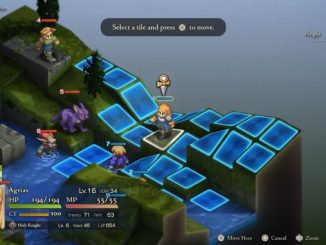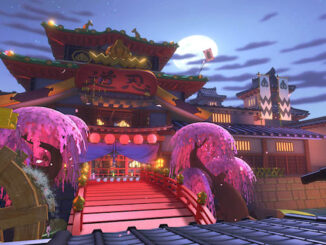Our review of Cuphead: The Delicious Last Course, developed by StudioMDHR. Available Now for PS4 (reviewed), Xbox One, Switch, Windows, and macOS.

WHAT IS IT?
The first and last Downloadable Content pack for Canadian indie darling Cuphead.
IS IT GOOD?
Yes. In fact, it might even be my favourite part of all of Cuphead. And it’s only $10.99!
WHO SHOULD PLAY IT?
Masocore gamers. Players with maple syrup in their veins.

HELL’S BELLS
I have a love/hate relationship with Cuphead.
I love its Fleischer/Disney 1930s cartoon aesthetic. I hate its alienating difficulty that makes me want to hurl my controller across the room. I love the sense of accomplishment that I get from finally defeating a difficult boss. I hate that it takes me hours or days at a time in order to get there. I love that it’s Canadian. I hate that I will probably never see its end credits, it’s that hard.
The original Cuphead has been around for a while now. As I wrote in my review of the PS4 release, it’s one of the greatest Canadian video games ever made, but it’s also the most difficult Canadian game ever made. By a long shot. If you ever meet a gamer from another country and they harbour negative stereotypes about cruel Canadians, Cuphead is why.
Some five years after Cuphead debuted on Xbox One/Windows, StudioMDHR has finally delivered a long-awaited DLC pack consisting of six new bosses, five parry challenges, a new playable character in the form of Ms. Chalice, and a host of new weapons/charms. As is tradition, there are also a handful of hidden secrets, including one surprisingly easy secret boss that borrows heavily from classic shmup Ikaruga. Delicious Last Course (see what they did there?) is significantly shorter than the core game (six bosses to Cuphead‘s twenty-eight), but it’s a lovely intermezzo while we wait for a proper sequel.
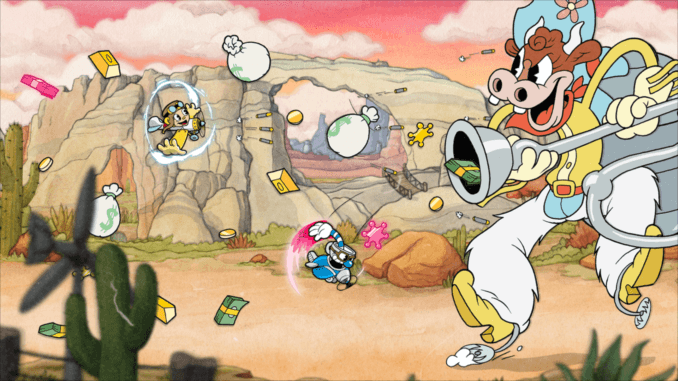
GRASSHOPPER AND THE ANTS
Cuphead is a lean, mean – no, vicious – video game machine, designed to make you weep with frustration and reach for the beta-blockers to prevent your heart from pounding out of your chest. Make no mistake: despite its beautiful cartoon aesthetic, its extreme difficulty makes it just about the furthest thing from a family-friendly game.
As a refresher, Cuphead is a “boss rush” run-and-gun game, in which 1-2 players take on a series of deviously tough fights against screen-filling foes. If Cuphead‘s primary selling point is its loving recreation of a long-dead art style, then its secondary feature is its absurd challenge. The greatest gamers, folks who have defeated Contra, Ghosts ‘n Goblins, and Ninja Gaiden on a single quarter, will fail the first, tenth, and one hundredth time they play Cuphead.
The controls are simple enough: each stage is a single screen, albeit one that morphs along with the phases of a given boss battle. Cuphead, Mugman, and Ms. Chalice have an array of weapons to fire from their adorably animated little finger guns, along with equippable “charms” that grant bonuses like extra health, and a handful of super attacks requiring a fully charged power meter. A key element of Cuphead is the “parry” move: with careful timing, players can parry various pink-coloured items – enemy projectiles, environmental elements – in order to accrue attack power, as well as avoid certain attacks.
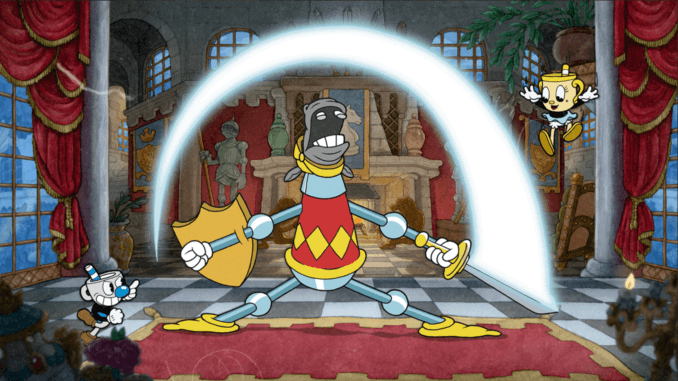
THE FLYING MOUSE
As expected, DLC is at its best whenever it’s making conscious homage to Disney and Fleischer cartoons dating back nearly a century. My favourites include an early battle heavily inspired by classic Silly Symphonies short Woodland Café, and another fight with dancing flames lifted straight out of Flowers and Trees (which won the first-ever Academy Award for Best Cartoon Short Subject back in 1932). Other highlights of DLC‘s six-boss roster include an intimidatingly huge mountain giant, a very funny ice-themed battle, and an aerial “dogfight” against some pups that would not be out of place in an early Mickey Mouse cartoon. Not all references are to cartoons either; plenty of the boss mechanics are borrowed from classic video games, including one “electric eyeball” that I still have nightmares about from the Genesis Ghouls ‘n Ghosts.
On that note, I am happy to report that the six bosses of DLC are easier than the twenty-eight found in the original game. They’re still devilishly tough, to be sure, but none are as objectively unreasonable as, say, Grim Matchstick the Dragon.
I wish I could say the same about DLC‘s quasi-optional “King’s Leap” challenges. Much like the Mausoleum challenges of the original, the five King’s Leap stages require you to survive a gauntlet of enemies using only your parry ability. Some of these are fun. Others, however, are deeply unfair and carry all the sadistic charm of Elden Ring played on a DDR pad. One, for example, requires that you bonk an enemy’s head twenty times in a row more or less without getting hit. Thankfully, Ms. Chalice’s new abilities (see below) make some of these challenges easier, but they still aren’t nearly as satisfying as the actual boss battles.
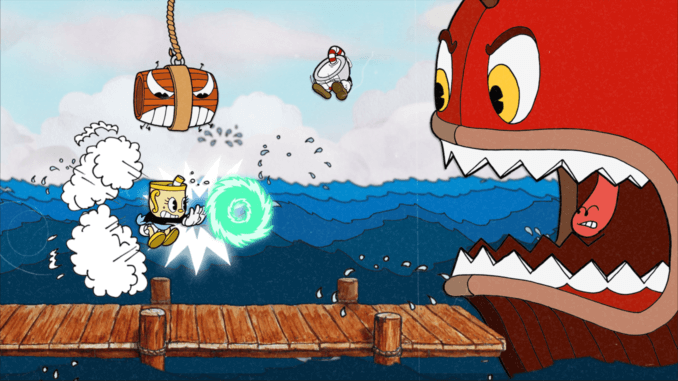
THE OLD MILL
Having now completed DLC, I’m still not convinced of the utility of new character Ms. Chalice.
Previously present as an NPC in Cuphead, Ms. Chalice is fully playable here, albeit with a few key differences that make her stand out next to Cuphead/Mugman. These include an extra hit-point (for 4 HP total), a double jump, a new “dash parry”, and the ability to roll-dodge through attacks. Superficially, Ms. Chalice appears to be a better character, but there are tradeoffs for each of her special skills. For one, Ms. Chalice’s single jump is shorter than her counterparts’, which means you pretty much have to double jump, adding extra chaos to an already chaotic game. Her dash parry actually replaces the jump parry, all but negating its utility in most boss battles. Her “invincible roll” is just a more finicky version of the “invisible dash” already available with the “Smoke Bomb” charm. Given that there are also existing charms for +1 or even +2 HP, Ms. Chalice’s only real advantage is in how she combines multiple abilities (albeit lesser versions of them) where Cuphead or Mugman can only equip a single charm per battle.
Oddly, Ms. Chalice’s greatest utility wound up being for the “Casino” boss gauntlet in the original game. Revisiting the core Cuphead with Ms. Chalice, I was delighted to discover that her dash parry makes it much easier to “roll” the die that dictates which mini-bosses you face off against at the Casino. Thanks to Ms. Chalice, I was able to exploit die rolls to only fight bosses I liked, while also landing on all the Casino game board spaces that granted extra health.
Overall, DLC is fantastic DLC. It’s affordable, it adds a healthy dose of new and innovative content, and the new bosses are a lot more dynamic, featuring more “phases” to each battle and wacky new gameplay techniques. (There’s one that will quite literally make you dizzy.) A special shoutout, too, to Toronto-based composer Kristofer Maddigan and his team of wonderful musicians who brought the DLC soundtrack to life. DLC is the sendoff that Cuphead needed, with all the love and care we’ve come to expect from StudioMDHR.
***
Final score: 9/10 cookie carnivals.
Visit the official website for Cuphead: The Delicious Last Course.

